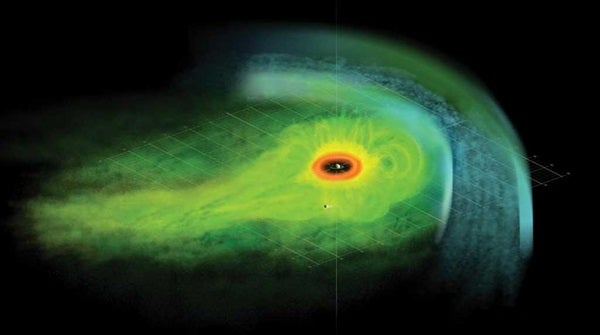In data collected by Cassini from July 2004 to December 2011, Tim Kennelly from the University of Iowa in Iowa City and his colleagues examined “flux tubes,” structures composed of hot, electrically charged gas called plasma, which funnel charged particles in toward Saturn. Focusing on the tubes when they initially formed and before they had a chance to dissipate under the influence of the magnetosphere, the scientists found that the occurrence of the tubes correlates with radio-wave patterns in the northern and southern hemisphere depending upon the season. This seasonal effect is roughly similar to the way Earth’s northern lights appear more frequently in the spring and autumn months.
Radio emissions have been used to measure Jupiter’s rotation period reliably, and scientists thought it also would help them determine Saturn’s rotation period. To their chagrin, however, the pattern has varied over the visits by different spacecraft and even in radio emissions originating in the northern and southern hemispheres. The new results could help scientists hone in on why these signals vary the way they do.










